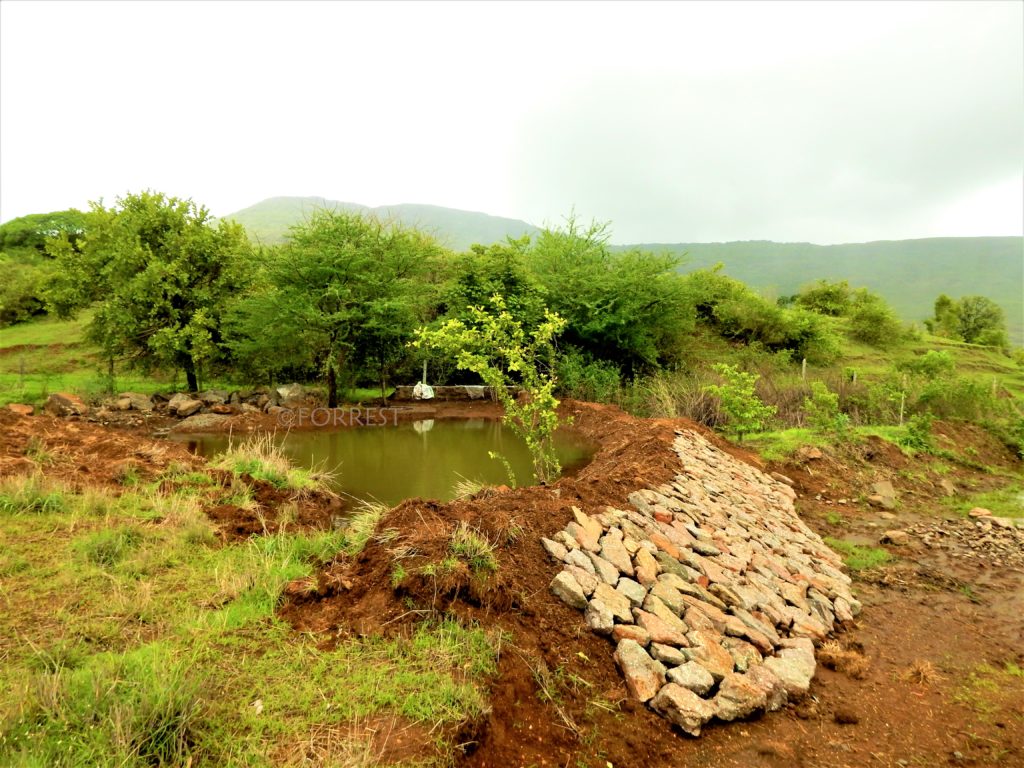

Rainwater harvesting is technical term for conserving rainwater either for storage or for recharging ground water.
India with Its tropical monsoonal climate receives bountiful rainfall between June and September, enough to sustain people, forests and rivers for the rest of the year. Even when we have plenty of rainfall most of the regions face water crisis or water stress on varied levels, except for monsoon season. Each year during monsoon India relaxes and relishes freshwater when rivers start flowing and ground water level comes up. We tend to forget our droughts and water stress we faced only a month or two back. If only we harvest this freshwater during monsoon, we do not have to worry about water for the rest of the year.
Urban and semi urbanized areas are used to piped supply of water. This disconnect with natural sources of water made people apathetic and careless about rainwater harvesting. Water shortage directly affects drinking water availability, agriculture and food production, industrial production, daily activities of common people and economy. Disappearing natural water resources, tapping of every water resource for human consumption and usage, damming of rivers is severely affecting forests, river ecosystems and people who are dependent on natural sources of water.
The effectiveness of rainwater harvesting techniques are certain if applied appropriately as per terrain, topography, geology, and rainfall of the area. Some of the effective techniques which can be implemented for harvesting rainwater, on individual level or community level can be-
Over harvesting of water and depleting ground water table is leading to drying of borewells after monsoon. Borewell recharging is highly effective for recharging borewells with fresh rainfall water. In one of the case studies, borewell which was drying in December for last many years, after recharging has started yielding water till May, only after one rainfall. Once recharged a bore-well rarely goes dry. Year after year, underground water-tables and aquifers are replenished thus keeping your bore-well up and running. Bore-well recharge technique also ensures the storage of naturally filtered rainwater in natural water-reservoirs i.e. aquifers and water-tables for use by future generations.
In another case study one institution was facing water shortage in dry season and was dependent on water tankers every year. Total 38 small rainwater harvesting structures were made, using locally available material. After first monsoon the well started yielding water throughout the year. In long term, the effect of rainwater harvesting was observed in the whole valley and borewells downstream started yielding water throughout the year. Planted trees in the area, which needed to be watered before, no longer needed watering. The increased water table in the valley was combined effect of rainwater harvesting structures and reforestation on the land.
Rooftops are areas where greater quantity and good quality rainwater can be collected. Parking, courtyards are other feasible areas to collect rainwater. Water collected though these is not of particularly good quality thus can be used for secondary purposes (e.g. gardening, washing) or recharging ground aquifer.
This can be implemented at institutes, colleges, schools, industries, apartments independent houses etc. Rainwater can be collected for direct use or to charge aquifer. Many state governments and municipalities provide incentives to promote it.
In one of the case studies rainwater harvesting system was installed on rooftop in Mysore at an independent house. The rainwater was stored in separate tanks for drinking, cooking and bathing. Almost 50 % of the family’s water demand (which is annually 1.8 lakh lit) is met by harvested rainwater ( Source CSE).
Planning rainwater harvesting is a smart choice as it leads to long term water integrity. It decreases water bill and economic stress. It is one-time investment with very long-term returns.
We as a nation, as a community, as individuals should take up rainwater harvesting as priority to stop this vicious circle of water scarcity. If every city and village start conserving the rainfall either storing it or ensuring aquifer recharge, we will not be needing large dams or sourcing water from far off. Agreed that we need policy interventions and strict implementation of laws to make rainwater harvesting on city or town level, but we can start working on individual level, right now. Rainwater harvesting is our traditional wisdom which we have lost. Regaining it will only save us, strengthen us, make our lives sustainable.

She conceptualized FORREST to conserve, to Inspire and to connect people back to nature. Her interest lies in Habitat ecology. A poet by nature with a touch of the wild.


We plan to restore a forest of 20000 trees in the monsoon of July 2021! And we need your help to do that! Contribute saplings in Vruksh Khosh or donate Rs. 50 per sapling.